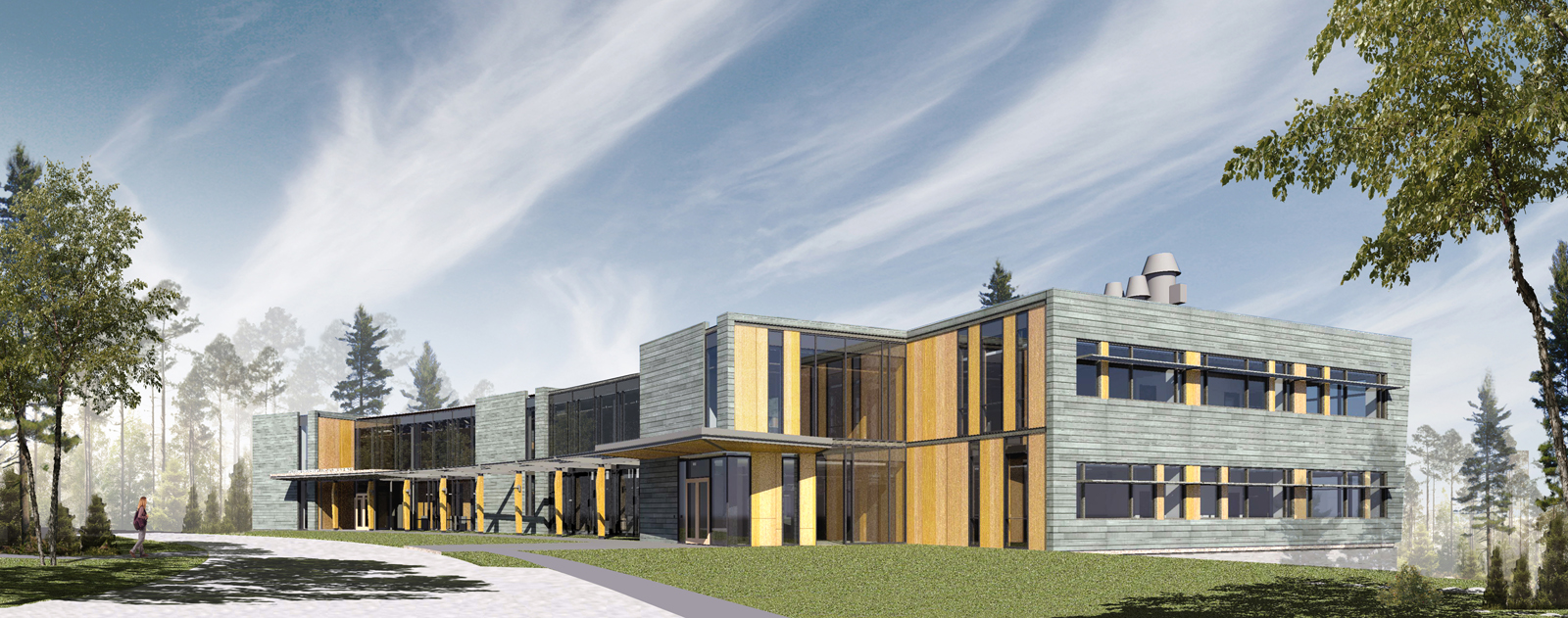Consigli Construction Co. Inc. announces that its Portland, Maine office has broken ground in East Boothbay, Maine on the third building at the new 64-acre Ocean Science and Education campus they are constructing for Bigelow Laboratory for Ocean Sciences.
Due to be completed in November of 2012, the $11.4 million Bigelow Center for Ocean Health (COH) will be one of three complementary and interconnected research centers on the campus built by Consigli Construction and designed by WBRC Architects · Engineers in association with Perkins + Will. Bigelow Laboratory received major funding for the COH from a federal construction grant awarded through the National Institute for Standards and Technology in September 2010.
The COH joins the Bigelow Center for Blue Biotechnology, which will be occupied this December, and the Center for Ocean Biogeochemistry and Climate Change, slated for completion in spring 2012. The newest facility will house a 16,600 square-foot main building, augmented by a 1,200 square-foot shore facility, with seawater pumping facilities and pier and dock space for research vessels to support field research and SCUBA operations.
“The COH will bring scientists together in a unified facility, where we can develop a multi-disciplinary, multi-scale approach to ocean health that will provide improved management tools to support healthy, productive and resilient ocean ecosystems,” said Laboratory Executive Director, Dr. Graham Shimmield.
When fully completed, the Ocean Science and Education campus will provide over 60,000-sf of laboratory, education and administrative space; replacing the Laboratory’s leased facilities in West Boothbay Harbor. BD+C
Related Stories
| May 25, 2011
Developers push Manhattan office construction
Manhattan developers are planning the city's biggest decade of office construction since the 1980s, betting on rising demand for modern space even with tenants unsigned and the availability of financing more limited. More than 25 million sf of projects are under construction or may be built in the next nine years.
| May 25, 2011
Olympic site spurs green building movement in UK
London's environmentally friendly 2012 Olympic venues are fuelling a green building movement in Britain.
| May 25, 2011
TOTO tests universal design at the AIA conference
If you could be 80 years old for 30 minutes—and have to readjust everything you think you know about your own mobility—would you do it?
| May 20, 2011
Hotels taking bath out of the bathroom
Bathtubs are disappearing from many hotels across the country as chains use the freed-up space to install ever more luxurious showers, according to a recent USAToday report. Of course, we reported on this move--and 6 other hospitality trends--back in 2006 in our special report "The Inn Things: Seven Radical New Trends in Hotel Design."
| May 19, 2011
BD+C’s "40 Under 40" winners for 2011
The 40 individuals profiled here are some of the brightest stars in the AEC universe—and they’re under the age of 40. These young architects, engineers, contractors, designers, and developers stood out among a group of 164 outstanding entrants in our sixth annual “40 Under 40” competition.
| May 18, 2011
Sanford E. Garner on the profitability of being diverse
Sanford E. Garner, AIA, NOMA, LEED AP ND, NCARB, founding partner and president of A2SO4 Architecture, LLC, Indianapolis, on gentrification, the profitability of being diverse, and his goals as NOMA president.
| May 18, 2011
8 Tips for Designing Wood Trusses
Successful metal-plate-connected wood truss projects require careful attention to detail from Building Team members.
| May 18, 2011
Major Trends in University Residence Halls
They’re not ‘dorms’ anymore. Today’s collegiate housing facilities are lively, state-of-the-art, and green—and a growing sector for Building Teams to explore.
| May 18, 2011
Former Bronx railyard redeveloped as shared education campus
Four schools find strength in numbers at the new 2,310-student Mott Haven Campus in New York City. The schools—three high schools and a K-4 elementary school—coexist on the 6.5-acre South Bronx campus, which was once a railyard.
















